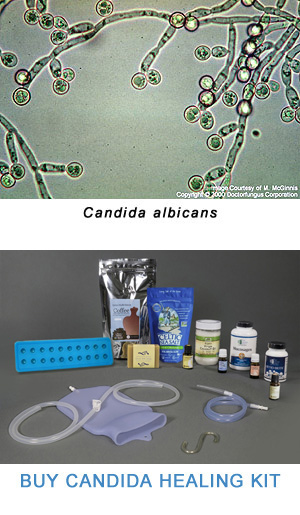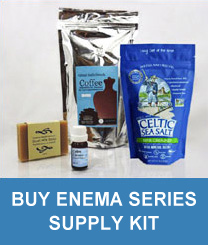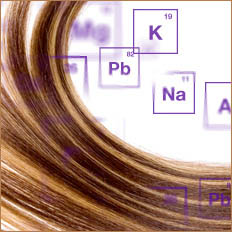Candida Die-Off: Symptoms and Treatments
What Is Candida Albicans?
Candida Die-Off Symptoms
How To Alleviate Symptoms
What Is Candida?
Candida albicans is a type of fungus that lives on and in the human body, and is primarily found in the colon. In a healthy gut microbiome, candida is balanced out by other healthy bacteria such as lactobacillus acidophilus and doesn't cause any problems. However, sometimes, often due to diet or antibiotic use, the gut microbiome can become unbalanced and the amount of candida in the body can grow out of control, causing harmful symptoms such as yeast infections and skin rashes.
When candida overgrowth occurs, it's a good idea to start following a candida diet and complete a candida healing protocol.
If you see a doctor, you will likely be given an antibiotic or antifungal prescription and sent on your way. However, antibiotics are often not the best way to treat candida overgrowth, as they can kill not only the candida, but also the healthy bacteria that keep it in check. Antibiotics and antifungals are also more likely to cause more extreme die-off symptoms.
A candida die-off reaction, which is a type of Herxheimer (Herx) reaction, can occur when one starts killing off candida overgrowth in the body. When the candida is killed, it releases all of its harmful endotoxins into the body. This can result in your immune system triggering an immune response that can increase inflammation throughout your body.
Candida Die-Off: Symptoms & Treatments
Kristina Amelong, CCT, CNC, discusses candida die-off symptoms and how to treat them during a candida cleanse. She discusses the importance of supporting the liver during your candida protocol, especially if you are experiencing die-off symptoms, and which parts of your treatment to pause or continue if your symptoms are severe.
Candida Die-Off Symptoms
Symptoms of candida die-off can range from fairly mild or nonexistent to severe and sudden enough to be alarming. Die-off often causes flu-like symptoms that can make people feel pretty miserable, so it's common for people to give up on a candida protocol once die-off symptoms begin.
It's extremely important to know how to deal with candida die-off symptoms before embarking on a candida healing protocol, so that you have all the necessary tools to complete it successfully.

Die-off symptoms can vary in nature and severity, but some common candida die-off symptoms are:
- fever
- chills
- brain fog
- fatigue
- muscle aches
- weakness
- nausea
- headache
- rapid heart rate
- skin flushing
- skin rash
- irritability
- bloating, gas, constipation, or diarrhea
Candida die-off symptoms may come on suddenly and can lead people to think that their body is in serious trouble, that they must be doing something wrong, and should immediately stop the candida protocol. Stopping your protocol cold turkey is not the best way to proceed.
Die-off symptoms are common, and are a sign that you are having success killing the harmful candida bacteria. However, if you're having extremely uncomfortable symptoms, it's best to try to alleviate those symptoms so you can continue with the program and not feel terrible. If you try to push through without adapting your protocol and rush the healing process, you will put more stress on your body and may actually end up slowing your body's healing. Take it slow and steady, and try to avoid and alleviate die-off symptoms when they arise.
How To Alleviate Uncomfortable Die-Off Symptoms
The best way to alleviate uncomfortable symptoms is to cut back on certain parts of the protocol you are following. This may look different for different people, depending on your current symptoms, your health history, and your candida protocol.

If you are doing the enema series, using Candida Essential Oil Blend suppositories, or taking Elim-A-Cand (an antifungal), this may be a place to reduce dosage or frequency, or pause until die-off symptoms subside.
For most people, it is a good idea to continue with the candida diet and most supplements that are part of your protocol, such as Ortho Mucosagen or Ortho Biotic, throughout the entire healing process. Again, however, each of us is different, so it is important to work with your practitioner to figure out the best protocol for you that can reduce the severity of your symptoms but continue to help you to heal from candida overgrowth. Set up a phone consultation with me if you'd like support with managing die-off symptoms and healing from candida overgrowth.
What can you incorporate into your program to try to manage and reduce die-off symptoms before they even begin?
- When taking an antifungal, whether it's a traditional antifungal from your doctor, the Candida Essential Oil Blend suppositories, or Elim-A-Cand, it's extremely important to provide additional support to the liver and gut microbiome. The liver is one of your main pathways for eliminating toxins, and severe die-off symptoms may mean that it is overwhelmed. This is one reason the enema series protocol is such an important part of our candida healing protocol, because it improves the health of your gut microbiome and also helps detoxify the liver.
Some additional ways you can support your liver and colon health:
- Take a glutathione supplement such as Researched Nutritionals Tri-Fortify Liposomal Glutathione. Glutathione is an antioxidant that is crucial to liver health and the detoxification process, and raising your body’s glutathione levels can help your body throughout the candida die-off process.
- Take a liver support supplement such as Enviromedica's Pastured Beef Liver.
- Milk Thistle is another great liver and detoxification support supplement.
- Take a regular probiotic and eat probiotic-rich foods to support and balance your gut microbiome. I recommend rotating a bottle of Ortho Biotic for one month with a bottle of CoreBiotic the next month.

- It's a good idea to optimize your body's mineral levels before starting a candida cleanse. If your body is deficient in certain minerals, there will likely be impaired bodily functions that could make die-off symptoms worse. Consider doing a hair tissue mineral analysis to test your body's mineral levels.
- For many of the flu-like candida die-off symptoms, tylenol or ibuprofen can help bring down inflammation in the body and ease symptoms. Make sure to have one or both on hand before starting a candida protocol.
- One common die-off symptom is irritated skin or rashes. Applying a lotion, moisturizer, or therapeutic salve such as Super Salve can help ease skin irritation. Taking daily MSM can also help heal inflammation and irritation in the skin.
- Taking vitamin C, in addition to being broadly beneficial to your body, supports adrenal health and boosts the immune system. Vitamin C can also act as an antioxidant that can help neutralize free radicals that may harm your body during the die-off stage.
- It's important to get plenty of rest and stay very well-hydrated while completing your candida healing protocol. Try to drink at least 2-3 liters of water per day.
- Sticking to the candida diet (eliminating all gluten and sugar, including natural sugars) is crucial. This will help reduce inflammation in the body.
Summary
Optimal Health Network's candida healing protocol is designed to deal with die-off symptoms from the start unlike antibiotic treatments. If possible, it is best to avoid die-off symptoms entirely during your candida protocol, as severe die-off symptoms can cause stress to your organs and immune system, and slow down your healing.
If you are doing a holistic candida protocol and back off on the antifungals and other aspects once die-off symptoms begin, these symptoms should clear up within a week or so. If they do not, set up a consultation with me to get support with next steps.
In general, you should follow our candida healing protocol for 6-12 weeks to fully heal. It's best to keep following the Ten-Day Diet even after the candida protocol has been completed, but if you do decide to eat sugars or gluten, add these back into your diet slowly, and try to keep sugar and gluten consumption to a minimum.
Die-off symptoms are one of the biggest reasons why people prematurely abandon the candida protocol, so educate yourself on what to expect and how to treat these symptoms, make sure you have support set up during this process, and don't give up! You absolutely can heal from candida overgrowth.
DISCLAIMER: This material is presented for informational purposes only and is not a substitute for medical advice, diagnosis, or prescribing from a licensed healthcare professional. We make no claim or guarantee for cure or relief of any specific symptom, medical condition, or disease when using any of the products or protocols referenced here. Consult with a licensed healthcare professional before altering or discontinuing any current medications, treatment, or care, or starting any diet, exercise, cleansing, or supplementation program, or if you have or suspect you might have a health condition that requires medical attention.
By Kristina Amelong, CCT, CNC
I-ACT-Certified Colon Hydrotherapist
Certified Nutritional Consultant